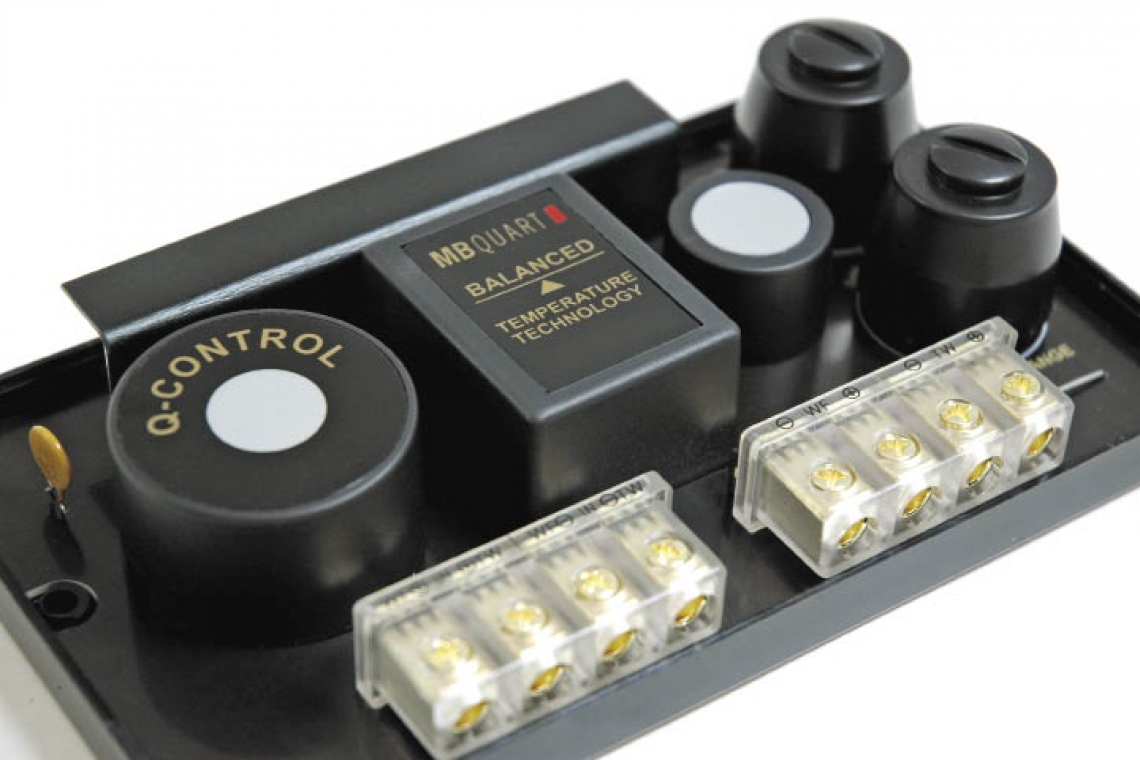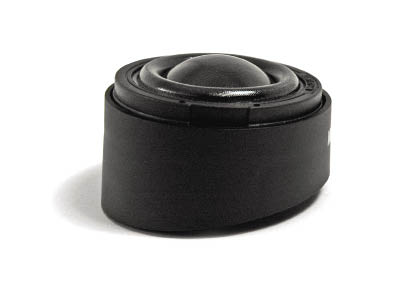Recently the good folks at MB Quart sent us one of their new Q-Series four channel amplifiers and a set of the new QS216 component speakers for review.
Because they were sent to us as a system, we decided to review them together and listen to them as a system.
The amplifier they chose for our evaluation is the Q4.80, which goes for around 500 bucks here in the U.S. of A., and is rated at 80 Watts per channel into 4 Ohms, and 120 Watts per channel into 2 Ohms. According to the folks at Maxxsonics, the Q series of amplifiers (2 mono models, 3 four channel models and a five channel) are designed for the audiophile or simply any high performance oriented customer.
The QS216 component speaker system is designed for listeners who demand uncompromised performance and accuracy in a two-way 6.5” component speaker system. At a price point of $599, you know these aren’t your garden variety components.
The Amplifier
The Q4.80 amplifier is a good looking unit, with a heavy extruded aluminum heatsink finished in a matte black textured powdercoat, with a nicely contrasting high gloss acrylic top cover. When the amplifier is turned on, the MB Quart logo on top of the amp illuminates in a soft blue/white glow.
Also found under a removable acrylic window on the top of the Q4.80 is a comprehensive set of control switches and adjustment pots to provide maximum signal tuning and manipulation. In addition to the fully adjustable high pass, low pass, and band pass crossover functionality, a frequency range multiplier switch provides an added range of adjustment to ensure no matter how you configure your system, the Q4.80 will have all the bases covered. Also found on the top of the amplifier are the usual gain pots, but these are accompanied by 3-color LEDs that provide a visual indication of the onset of maximum output, and greatly assist in getting the gain set correctly. To further tune your sound, there are front and rear channel bass boost pots, and the rear channel also provides an adjustment for the center frequency of the boost, from 30 to 80Hz. Crossover slope is switchable from -6dB to -12dB as well, providing even more tuning flexibility. A switch allows duplication of the rear channel crossover settings to the front channels, and an input signal switch provides selectability of standard four channel input or a two channel input.
On each end of the heat sink are removable end panels which cover the wiring connections and trim out the installed appearance of the amplifier. Under one panel are the input and output RCA connections, and on the opposite end of the amp are the power and speaker terminals, and an 80A MAXI fuse.
Amp Tech
The Q4.80 amplifier is a time-tested design using MOSFET power supply devices and the latest Epitaxial Planar Bi-Polar output transistors. A pair of toroids are fed current through eight high current MOSFET switchers, with a total of 8800µF of input capacitance, and another 17,600µF of secondary capacitance.
The PCB is military-grade FR4 material, which means it’s rugged and capable of carrying high currents without complaint. The components are symmetrically laid out, and utilize a combination of standard through hole parts on the main PCB, and surface mount type devices on the daughter board used for signal control and manipulation.
The Components
The QS216 component speaker kit is comprised of a pair of 6.5” midrange drivers,
a pair of 40mm Teteron silk dome tweeters and a pair of fully adjustable passive crossover networks. The system also comes with all the usual tweeter mounting options for flush, top or surface mounting. The midrange drivers are built around good looking and more importantly, low-resonance cast aluminum baskets, and feature a special polymethacrylimide (PMI) cone material that has been blended with Nomex for very low mass and high rigidity. The low mass contributes to driver sensitivity, which means the speakers will play louder with less power. The midrange driver uses a nitrile butyl rubber (NBR) surround for enhanced reliability in the extreme automotive environment, and with a mounting depth of approximately 3 inches, they should fit in most doors without clearance issues. Electrical connections are made via nice looking terminals that accept the wire through a hole in the center post, and use an outer sleeve to screw down on the wire and cinch it in place. I’m not too sure if these were the best choice of terminals, as my samples came loose twice during testing, and when I tried to use a small pair of pliers to get them good and tight, the terminal itself spun in the mount. If I were mounting these speakers in my car, some threadlocker may be in order.
The 40mm (1.5”) Teteron silk dome tweeter is larger than most tweeters in this type of kit, but the advantage is high output and good power handling, and the synthetic Teteron material is said to provide excellent sound reproduction and greater durability than regular silk.
The crossover networks feature MB Quarts Balanced Temperature Technology, and can be configured in either a standard or bi-amplified mode. Interestingly, level adjustments are provided for both the midrange and the tweeter with the mid range having three settings for a total of 5dB of adjustment, and the tweeter gets four level positions, again with a 5dB window of adjustment. Terminals are rugged and use Phillips head set screws to retain up to 10 gauge cables.
Listening
For this review I decided to listen to the amplifier and speakers together, rather than use my normal reference system. To begin, I connected the QS216’s to the front channels of the Q4.80 in full range mode, so I could get a good idea of the full spectrum capability of the system. Later when it became time to test the amplifier I added a 4 Ohm 12-inch woofer in a sealed enclosure to the rear channels in bridged mode.
With just the components playing, my immediate impression was excellent clarity and high frequency definition. Acoustic piano and 12 string classical guitars sounded open and natural with just a hint of brightness. After adjusting the tweeters a down a couple of dB, which was quick and easy thanks to the rotary level controls, the brightness was calmed and the overall tonal characteristic of the upper registers was very pleasant.
Female vocal tracks from Jennifer Warnes, k.d. lang and Rebecca Pidgeon were very clear and detailed, but a bit forward and carried just a hint of edginess. The same was true with well recorded brass, with these speakers the Big Man’s sax will really reach out and touch you.
It should be noted here that my listening is done in a quiet, acoustically treated listening room, and absolutely on axis, right in what home audio people call “the sweet spot”. So, what can sound a bit forward here, may be about perfect when you start listening far off axis, as is the case with the speakers mounted in your doors.
 |
 |
 |
 |
 |
The bottom end was good as well, maybe not quite as much below 150Hz as some other systems, but the bass that was reproduced was tight and punchy. I did marvel at the amount of detail and clarity the system exhibited, it’s pretty obvious that someone spent a lot of time working out the details and creating a system that is designed to bring your music to life. The Q4.80 amplifier did its part here too, with excellent frequency response on the top end, and a very good sense of space in recordings like The Cowboy Junkies “Trinity Sessions”. With the woofer added to the mix, the result was a very pleasant, quite accurate, and very lively sounding system. I didn’t notice any strain on the upper end when heavy bass notes hit, and the amplifier exhibited very good control of the woofer regardless of the music. Bass was well defined and clean with no ringing. Because this was a good sounding system and I was enjoying myself, the listening session turned into the better part of an afternoon, and by the time I was done the amplifier was quite warm to the touch. Nothing to be concerned with, but warmer than I might have expected, until I reminded myself that this was a classically designed Class AB amplifier, and didn’t have the type of efficiency I’d gotten used to with the plethora of full range Class D products I’ve worked with lately. Any audiophile will tell you, it takes a very, very good Class D design to sound as good as one of these tried and true Class AB amps, so a bit of lost efficiency seemed like a worthwhile trade.
Conclusion
As a system the Q4.80 amplifier and the QS216’s complement each other well, and benefit from each other’s attributes. The amplifier proved to be a solid and very good performing piece of gear, with greatly extended bandwidth and more power than expected. It had very low output impedance, and the signal steering and filtering worked exactly as expected. The component speaker system sounds excellent, perhaps lacking just a hint of warmth and leaning a bit on the “clinical” sounding side, but make no mistake, if you’re looking for a pair of speakers to produce every detail and nuance in your favorite recordings, the QS216’s may be for you. And if you couple them with a Q4.80, and a good subwoofer, maybe you’ll be like me and find yourself constantly spending a lot longer listening to the system than you originally intended!
Related Articles
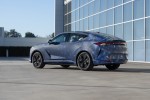 Acura To Bring Back The RSX… Sort Of
Acura To Bring Back The RSX… Sort Of
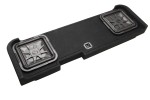 KICKER Under-Seat Loaded Enclosures for Ford, GMC, Chevy, RAM
KICKER Under-Seat Loaded Enclosures for Ford, GMC, Chevy, RAM
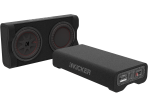 Understanding Audio Radiators w/ KICKER
Understanding Audio Radiators w/ KICKER
 OPTIMA Batteries - Battery Mounts
OPTIMA Batteries - Battery Mounts
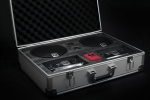 MB Quart Q Series Speakers
MB Quart Q Series Speakers
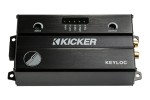 KICKER KEYLOC Smart Line-Out Converter
KICKER KEYLOC Smart Line-Out Converter


